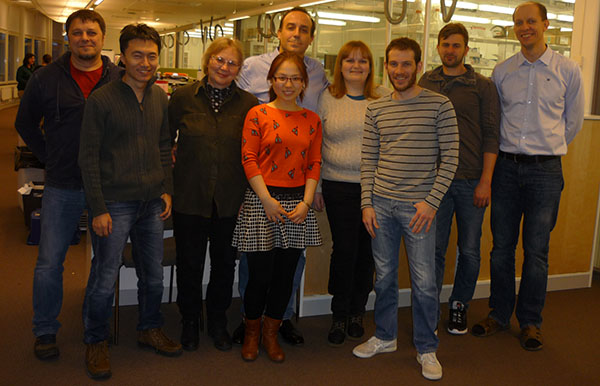
Research interests
Cellular communication is achieved through the interactions of specialized receptor molecules at the cell surface and their ligands. Our research group uses X-ray crystallography and Small Angle X-ray Scattering (SAXS) to study receptor-ligand interactions between T or NK cell receptors and Major Histocompatibility Complex (MHC) molecules, as well as bacterial adhesins and virulence-associated molecules.
All of our studies are complemented by a wide array of immunological assays as well as an extensive amount of biochemical techniques, including surface plasmon resonance and circular dichroism. By understanding the structural details of proteins, we can probe their function and potentially design artificial ligands that could modulate their function and activity.
Development of MHC class I-binding altered peptides for vaccines
Using a combination of structural biology and immunology, our research group has defined a procedure that allows for the design of altered peptide ligands (APLs) that bind with high affinity to MHC-I ligands. The immunogenic APLs act as mimotopes of disease-associated non-immunogenic epitopes, and enhance the stability of MHC-I molecules. Importantly, these modified peptides conserve a structural conformation similar to the wild-type infection-derived or non-immunogenic tumor-associated peptides. The induced immunogenic CD8+ T cells cross-react with the original peptides, resulting in enhanced responses. Studies of consequences of substitutions in APLs on CD8 responses directed towards tumor associated antigens and viral immune escape variants are ongoing.
Determination of the crystal structures of Streptococcus pneumoniae-associated virulence factors
Streptococcus pneumoniae (pneumococcus) is a major human pathogen and the leading cause of pneumoniae, bacteremia and meningitis in adults. The increasing number of antibiotic-resistant strains and the suboptimal clinical efficacy of available vaccines hamper control of this pathogen. We focus on novel virulence-related pneumococcal proteins that could be used as potential targets for future drugs.
Determination of the crystal structures of main allergens
Our research group has a strong interest in determining the crystal structures of allergens that provide important information regarding the initiation of allergy responses. These three-dimensional structures are used as templates for the design of hypoallergenic variants and to identify main antibody epitopes.
Group members
Jeremie Buratto, PhD, post-doc
Anatoly Dubnovitsky, PhD, senior scientist
Christina Gerstner, PhD student
Ida Hafstrand, PhD student
Xiao Han, PhD, post-doc
Gennady Kozhukh, PhD, senior scientist
Tatyana Sandalova, PhD, senior scientist
Tim Schulte, PhD, post-doc
Renhua Sun, PhD, post-doc
